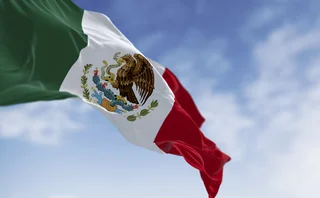Can High Frequency Trading Be Defined?

Earlier this week, US Commodity Futures Trading Commission (CFTC) gathered several wise men to discuss how many angels could dance on the head of a pin. Actually, during the meeting of the regulator's Technology Advisory Committee, the discussion turned to a problem that was, amazingly, similar—how to define high-frequency trading.
Most were there to respond the CFTC commissioner Scott O'Malia's request to help the regulator develop a solid definition that extends beyond “I know it when I see it.”
I've always found it silly to attempt to create objective definitions for things that by definition are subjective, such as high-frequency trading and even best execution. Depending on your perspective, it is difficult to know what is “high-frequency” and what is “best.” The last-place finisher in a 100-meter dash might not be considered fast by Olympic standards, but I know he is certainly faster than I am.
Coming up with an objective definition for high-frequency trading will require selecting arbitrary thresholds. However, those thresholds need to be logical and defensible. In any high-frequency trading conversation the same terms always come up—latency, automation, proximity, aggressiveness and other related words.
As the CFTC's chief economist Andrei Kirilenko mentioned during the committee's discussion, measuring and collecting data on these terms would prove exceedingly complicated.
Kirilenko and his colleagues researched 15,000 trading accounts, examined each account's intraday and end-of-day trading inventory and found that only 16 accounts behaved in what they would term a “high-frequency” manner. In fact, they saw these accounts acting more as "appendages of the matching engine" by providing additional order-matching capabilities. Without them, says Kirilenko, there would be significantly more resting orders on the exchange's order book.
One suggestion, which I believe has merit, comes from Richard Gorelick, CEO of private trading firm RMG Advisors. Gorelick says regulators should avoid establishing arbitrary trading thresholds and look to regulate trades coming from automated trading systems. The data on which orders come from automated trading systems and who runs them is already being collected by exchanges and could be accessed easily by the CFTC if necessary.
No matter what the final definition is, the CFTC will need to make sure that the metrics it relies on are easily measured and collected. But knowing how regulators have worked in the past in developing definitions and standards, I'm not holding my breath.
Only users who have a paid subscription or are part of a corporate subscription are able to print or copy content.
To access these options, along with all other subscription benefits, please contact info@waterstechnology.com or view our subscription options here: https://subscriptions.waterstechnology.com/subscribe
You are currently unable to print this content. Please contact info@waterstechnology.com to find out more.
You are currently unable to copy this content. Please contact info@waterstechnology.com to find out more.
Copyright Infopro Digital Limited. All rights reserved.
As outlined in our terms and conditions, https://www.infopro-digital.com/terms-and-conditions/subscriptions/ (point 2.4), printing is limited to a single copy.
If you would like to purchase additional rights please email info@waterstechnology.com
Copyright Infopro Digital Limited. All rights reserved.
You may share this content using our article tools. As outlined in our terms and conditions, https://www.infopro-digital.com/terms-and-conditions/subscriptions/ (clause 2.4), an Authorised User may only make one copy of the materials for their own personal use. You must also comply with the restrictions in clause 2.5.
If you would like to purchase additional rights please email info@waterstechnology.com
More on Trading Tech
MayStreet founder says LSEG abandoned integration in new court filing
In response to LSEG’s motion to dismiss a lawsuit filed by the founder of one of its acquired companies, lawyers for Patrick Flannery have offered more details around communications between MayStreet and the exchange group.
As outages spread, it’s time to rethink how we view infrastructure technology
Waters Wrap: First AWS and then Azure. And these are only the most recent of significant outages. Anthony says a change is needed when it comes to calculating server migrations.
LLM firms come for finance, BMLL gets bought, LSEG users get Preqin feeds, and more
The Waters Cooler: Tradeweb completes fully electronic RFM swaptions trade, IBM cashes in on digital asset mania, and more frights and delights in this week’s news roundup.
TMX’s CEO wonders if tokenization is a ‘solution looking for a problem’
While acknowledging the potential of tokenizing securities, John McKenzie said regulators shouldn’t move too fast, and let customer demand drive adoption.
Bolsa Mexicana embarks on multi-year modernization project
Latin America’s second largest exchange is embracing cloud and upgrading its infrastructure in a bid to bolster its global standing, says CEO.
S&P’s $1.8 billion buy, an FIA restructure, a tokenization craze, and more
The Waters Cooler: CAIS creates CAISey, BNY deploys EquiLend, and more in this week’s news roundup.
Bloomberg integrates AI summaries into Port
One buy-side user says that while it’s still early for agentic tools, they’re excited by what they’ve seen so far.
Larry Fink: ‘We need to be tokenizing all assets’
The asset manager is currently exploring tokenizing long-term investment products like iShares, with an eye on non-financial assets down the road.







